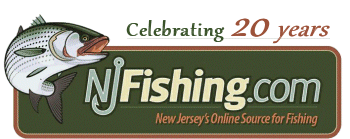 |

|
Message Board
 |

|
 |  | |
 |  | |
 |  | |
 | ||
|
|||||||
| NJFishing.com Salt Water Fishing Use this board to post all general salt water fishing information. Please use the appropriate boards below for all other information. General information about sailing times, charter availability and open boats trips can be found and should be posted in the open boat forum. |
|
|
Thread Tools | Display Modes |
|
#1
|
|||
|
|||
|
Just wanted tp post the Summer Flounder recommendations from the Monitoring Committee for the upcoming meeting next week December 13 - 16. This was taken right from the briefing materials for the meeting which can be found at the following link.
https://static1.squarespace.com/stat...es_2021-12.pdf For all these reasons, the MC was not comfortable with the Council staff recommendation for a 33% liberalization in harvest in 2022 compared to 2018-2021 average harvest. The MC considered a few different methods for calculating possible liberalization amounts, including a weighted average of recent years harvest with 2021 down weighted, or recommending a liberalization of 25% based on the increase in the RHL between 2021 and 2022. However, many MC members were concerned that these increases would still pose too much of a risk of exceeding the 2022 RHL. Given these concerns, the MC recommended status quo regional measures for summer flounder. However, if the Council and Board prefer liberalizations, the MC recommended a maximum coastwide liberalization of 16.5%, which is half of the 33% liberalization recommendation in the Council staff memo. Under conservation equivalency, the MC also recommended status quo non-preferred coastwide measures including a 19-inch minimum size, 4 fish bag limit, and open season May 15-September 15. If the Council and Board prefer liberalizations to the non-preferred coastwide measures, the MC recommends dropping the non-preferred coastwide minimum size limit to 18.5” from the current 19”. Based on a rough analysis of the impacts of this change using 2019 landings and discard length frequency data, this change would be expected to result in an approximately 11% increase in harvest in weight and a 14% increase in harvest in numbers of fish. There are several caveats associated with this analysis including that the underlying data are from 2019, and length data from the NEFSC are in centimeters and binned to the nearest half inch which introduces some rounding and conversion error. This analysis also assumes full size limit compliance and similar availability at size in 2022. The MC did not support the Council staff recommendation of dropping the non-preferred size limit to 18” due to the concerns about large liberalizations discussed above. The MC recommended status quo precautionary default measures including a 20-inch minimum size, a 2 fish possession limit, and an open season of July 1-August 31. The group agreed that these measures were sufficiently restrictive to deter states from adopting measures outside of the agreed upon conservation equivalency guidelines for 2022. So status quo, non preferred of 4 fish at 19". If in 2018, 82% of directed angler trips under the same regulations ended up with ZERO fish harvested, how exactly will 4 fish at 19" help matters. Might as well make it 20 fish at 19" because if you can't catch one keeper at 18" or 19" you're certainly not going to catch 4 or 7 or 12 or 20 at the same minimums. This is the definition of liberalization the recreational sector was promised for 20-years worth of sacrifices. No change in sizes, for the four states mentioned they'll most likely remain 18" or 19" meaning harvest composition won't change meaning we'll continue targeting the harvest of the spawning stock with an emphasis on the large female breeders. Less mommies, less babies, continued high discard levels, low recruitment which truthfully they really don't even know how to quantify and explain how this fishery recovers. Honestly the level of incompetency in the management of this stock has reached new heights. MSA mandates using data from science as a basis for management decisions. Instead decisions are being made to support a narrative fisheries managements wants which who knows what that is. So it looks like for another year it's going to be use the same failed regulations which have crippled this fishery with the hope we have different results. What did we all say that was the definition of three years ago.....you got it. It's the same definition today. &%^$#@! disgrace! This is where no lobbying effort doesn't help. Public Commentary is a meaningless term when it comes to fisheries management. Washington has their playbook and they're following it. Everyone on this site should reach out to RFA, SSFFF and JCAA and ask what their position is on this fishery and what they're doing to save this fishery and protect the rights of both sectors because the manner in which it's being managed it is absolutely going to crash and burn. Ask what their position is, and ask in their opinion, what changes in the regulations have to be made to save this fishery. If regulations don't change, this fishery is done. Only question is when. Absolute ^%$#&@! incompetence. |
|
|